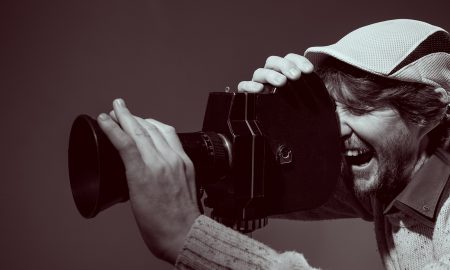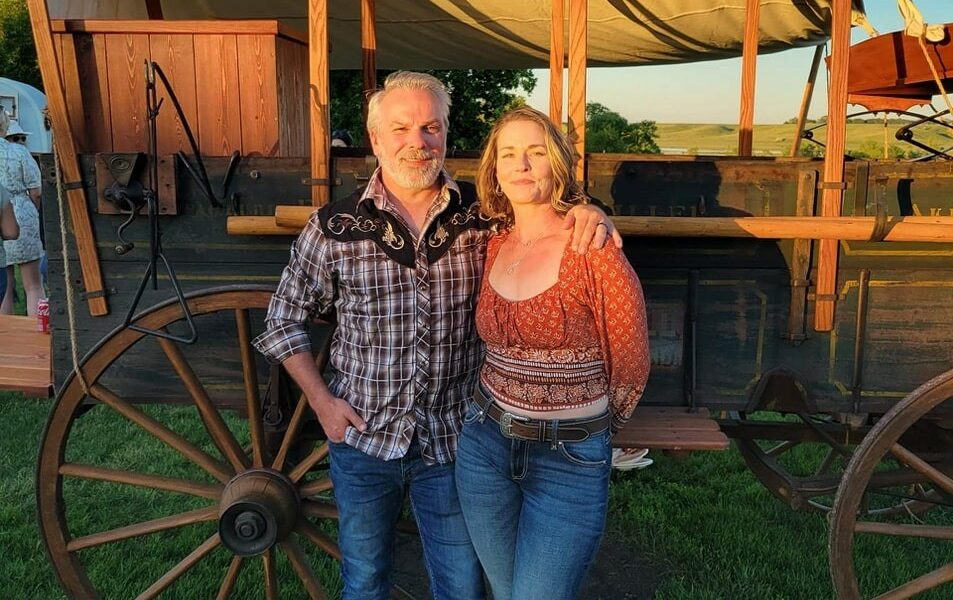

Today we’d like to introduce you to Travis Boley.
Hi Travis, we’re thrilled to have a chance to learn your story today. So, before we get into specifics, let’s briefly walk us through how you got to where you are today.
I grew up in Lexington, Missouri. My home was on the Santa Fe Trail (largely paved over these days). The homes of William Waddell and William Russell (two founders of the Pony Express) were right down the street. Lewis & Clark had camped nearby, a couple of Civil War battles occurred there (the first battlefield is a state historic site today), Jesse James was shot there, a replica of the bell of the Saluda (a steamship that exploded in 1856, killing over 100 Mormon emigrants and 49ers) sits in a park atop the site of the last place I lived, the town is filled with hundreds of beautifully restored antebellum homes. I was surrounded by the 19th-century American West daily. I completed an undergraduate degree at UMKC, then a master’s in historical administration at the University of Kansas, and promptly went to work in sports history! I’d built exhibits on James Naismith (the inventor of basketball who was a professor at Kansas for 37 years) and Forrest C. “Phog” Allen (Naismith’s famed player who went on to a Hall of Fame coaching career; Allen Fieldhouse in Lawrence bears his name) while living in Lawrence, and I was finishing grad school at the exact moment that the Naismith Memorial Basketball Hall of Fame in Springfield, Massachusetts announced plans to build a new facility. I was brought on board as a curator, stayed there for a couple of years, moved on to another sports museum in St. Louis, and after a couple of years there, saw an advertisement for the Executive Director’s job at the Pony Express National Museum in St. Joseph, Missouri. I threw my hat in the ring and landed that position, returning me to the career path I’d imagined in my younger years.
But then, a curious group of people were meeting monthly in my museum in St. Joseph, and I started sitting in on their local chapter meetings occasionally. I learned they were looking to professionalize and hire someone to take the reins. They were a national historic trails preservation group and partnered with the National Park Service to achieve their goals. I turned my attention to them and landed that position with the Oregon-California Trails Association (OCTA) over 20 years ago. I became the nation’s very first manager of a historic trails organization (there are now several others). The HQ building is in Independence, though OCTA’s 11 chapters stretch from the Missouri River to the Pacific Coast. That means I’ve traveled nonstop up and down these trails for over two decades, and I have as much zeal for it today as I did the day I accepted their offer. My youngest daughter just graduated from Blue Springs South last year and is now on a track and cross-country scholarship at UMKC, so I have even more time to indulge myself in our fantastic National Trails System.
I’m also very involved with the Independence Rotary Club and love our work beautifying and stabilizing our community. Independence unfairly takes a lot of heat in the region, but historically, no other town in the metro area comes close regarding historical importance. The community is filled with beautiful homes and amazing people who volunteer untold hours and dollars to achieve better Independence. I hope that my Rotary Club will continue to take the lead to encourage other metro-area Rotary Cubs to come together to raise significant dollars and human power to help us overcome the problems that plague the entire region by seizing upon the incredible opportunities we have to lift people out of poverty and steer folks away from crime, drugs, and violence. My trail projects can be a piece of the puzzle in helping to solve some of these issues. Our region is on a serious winning streak of late, and trails are part of that tapestry we call “quality of life” issues.
Finally, my wife, Steffany, more or less serves as my assistant. Though she works helping high school students with their college or trade school applications and scholarships during the school year, she is usually right there with me every summer, volunteering her time and helping me to advance my projects.
Can you talk to us about the challenges and lessons you’ve learned? Looking back, has it been easy or smooth in retrospect?
My start with OCTA 20 years ago was bumpy. I didn’t know that the vote by their board of directors to create the position was a 7-5 vote. So, I immediately entered a situation where five board members automatically didn’t want me there. It was nothing personal. They didn’t believe the position should exist. But I persevered, had some successes, and helped guide the board through a strategic planning process. The organization had existed for over two decades and had never adopted a strategic plan. They were very successful out of the gate, capitalizing on the 150th anniversary of the Oregon Trail and gaining ever-growing audiences every year throughout the late 1990s. However, as with almost every membership organization in America, they saw a slide in membership numbers. Thomas Putnam’s book, “Bowling Alone,” forecast this phenomenon nearly a decade before, using the decline of bowling leagues as a metaphor for the overall decline in civic engagement via membership or affiliations with various clubs or organizations. Churches, scouting, museums, historical organizations, Rotary, Kiwanis, the Elks, and the Lion’s Club face the same issues. But we’ve been able to stabilize our membership numbers of late, increase our endowment, increase our revenues, and do a much better job of marketing our work to a broader public. COVID provided an opportunity, as we’d just adopted the fourth strategic plan of my tenure when the world shut down. Since we couldn’t gather for preservation work or trail conferences, we were able to focus solely on developing better online infrastructure, launching a YouTube Channel, expanding our Facebook offerings, launching Instagram, Twitter (now X), and TikTok pages, getting most of our chapters to start Facebook pages, rebuilding our family of websites, and winning a Google Ads grant that has given us $10,000 of free advertising every single month. Like the original Oregon and California Trails, the road is never smooth, and there will be a struggle almost daily, but the journey is the reward. As I learned long ago, something worth attaining is always challenging.
Can you tell our readers more about what you do and what you think sets you apart from others?
I lead the Oregon-California Trails Association, a 501c3 nonprofit organization based in Independence, Missouri. Our 11 chapters can be found in most of the states west of the Mississippi, and we partner primarily with the National Park Service to preserve, promote, and protect these famous historic trail corridors. People are often shocked at how much of the trail you can still see and visit, even in an urban area like Kansas City. Trail ruts (or swales), inscriptions in rocks, gravesites, the diaries and letters left behind, the famous landmarks; so much of it is still there. I liken my role to the hub of a wagon wheel with innumerable spokes radiating out to the rim. Those spokes are our dozens of committees that focus on myriad things such as education, archaeology, preservation, genealogy, library and archives, advocacy, websites, social media, marketing and public awareness, video production, publications, finance, investments, partnerships, and on and on and on and on.
Another thing that shocks people when they learn more about us is the depth and breadth of our organization and the historic trail system. Created by an act of Congress in 1968, today, the National Trails System encompasses 32 Scenic and Historic Trails that touch all 50 states. We partner with most federal and state land management agencies and work closely with county and city governments. We also have a robust program to engage private landowners in best practices for historic preservation. We are renowned for our mapping and marking programs, and of the 21 National Historic Trails and their nonprofit supporters, we are by far the largest. We are considered a leader in this field, and federal agencies now use many of the policies developed by our massive team of volunteers as best practices (our Mapping Emigrant Trails program is one area where we excel). We even dabble in documentary production, having screened several films over the years at various film festivals, on local PBS affiliates, and on our YouTube Channel.
Long ago, we also started inviting tribal nations to share their stories of these trails, and today, we are fortunate to have several prominent American Indian scholars as members of OCTA. Their stories about these trails are quite different from those who went west. Rarely is an OCTA event staged without several tribal people sharing their side of this mid-19th-century slice of American history. As an organization, we do not relinquish our shared history’s complete, accurate, and honest accounting. It is just as essential for us to honor the ancestors of the people who were on this continent for thousands of years before any Europeans arrived as it is for us to honor our ancestors, who undertook the challenging and dangerous task of crossing half a continent across hostile deserts and impenetrable mountains, sometimes amid a deadly cholera epidemic, with all of their worldly possessions in a covered wagon.
We are also keenly interested in the stories of African-Americans who went west (either by force or by choice), the Hispanic people who also populated California by the time of the gold rush (or came north from Mexico as a result of the discovery of gold), and of course the Chinese people who poured in by the thousands at the same time. The story of our trails is about as purely American as it comes, detailing a rich tapestry of different cultures, religions, and languages and the struggles they all endured, whether from the elements, the terrain, or one another. America’s history is often simultaneously unique, fascinating, maddening, rewarding, cruel, fun, and sometimes horrifying. But it is important to know it as thoroughly as possible and not to whitewash any of it, especially not to exclude anyone from sharing what they know about it. There is now even an emerging field dedicated to sex and gender issues from this period. There is still much left to learn about these two famous trails.
Locally, I’ve been attempting to see a 47-mile long hiking-biking trail built in the historic trail corridor of the Oregon/California/Santa Fe Trails through the KC area, from the original steamboat landing along the Missouri River in Sugar Creek, through the trails’ shared corridor in Independence, Raytown, Kansas City, Leawood, Overland Park, and Olathe, right up to the spot where the Santa Fe Trail splits away from the Oregon-California Trail just west of Gardner. We have developed a 216-page planning document with the Mid-American Regional Council and have about 11 miles of trail built, with most of the built sections in Independence and Kansas City. This includes several bridges over or under interstates and federal highways, companion auto tours, and pedestrian signing. I envision it connecting to the Rock Island Trail near the Crane Brewing Company in Raytown, which can then take you to the Katy Trail and St. Charles County in eastern Missouri. We have a real opportunity to do what no other metro area in America has done — develop an authentic historic trail experience throughout a metropolitan area in the actual corridor of the nation’s most renowned and famous trails. I view this as my legacy project, so I hope I have enough years left to see it come to fruition.
We’re always looking for the lessons that can be learned in any situation, including tragic ones like the Covid-19 crisis. Are there any lessons you’ve learned that you can share?
The most interesting thing I learned during COVID is that there remains a younger audience eager to learn this history and to engage in helping to preserve it. Over the past three years, most of our new members are people in their 40s and 50s, and even a fair number of people in their 20s and 30s. Our organization had long primarily been the domain of retirees. While they still make up a huge percentage of our membership, I am encouraged by the number of younger people joining our ranks daily. Investing in technology is important, but investing in the right technology is most important. Many organizations make the mistake of only having a static website and an under-utilized Facebook page. You must reach the audience where they are. We learned the demographics of each social media tool and have started crafting our message to reach the audiences primarily engaged with each. So, our Facebook content, which primarily reaches older audiences, will be quite different from something we might post on TikTok, which is geared toward younger adults and teens. I’ve been very fortunate to find multiple interns over the years, and each of them had specialized skills that we could utilize while helping them expand on their skill sets and even learn new skills. Every one of my interns has gone on to professional careers in their chosen fields (or are well on their way). I was fortunate to land a recent graduate from William Jewell right as COVID hit. He had some video production skills and helped me get our YouTube Channel going. I currently have an outstanding young woman who is a senior at the University of Missouri (coincidentally, she also grew up in Lexington, graduating 28 years after me), and she has helped us grow our digital media outreach exponentially. It’ll be unfortunate to lose her to graduation next spring. With COVID shutting down most of our operations, our focus on digital media saw us increase our membership numbers store sales, and finish well into the black in those two worst years.
Pricing:
- $60 is our basic annual membership fee, and educators can join for only $45. That gets you four issues of our scholarly publication, the Overland Journal, and four issues of News from the Plains, our quarterly newsletter. It also gets you free access to all 40+ years of back issues of the Overland Journal, as well as access to our online genealogy tool, Paper Trail, which is an index to thousands of trail diaries.
Contact Info:
- Website: www.octa-trails.org and www.octa-journals.org
- Instagram: www.instagram.com/octa_1836
- Facebook: www.facebook.com/octa1982
- Twitter: www.twitter.com/octa_1836
- Youtube: www.youtube.com/@octatrails
- Other: https://www.tiktok.com/@octatrails


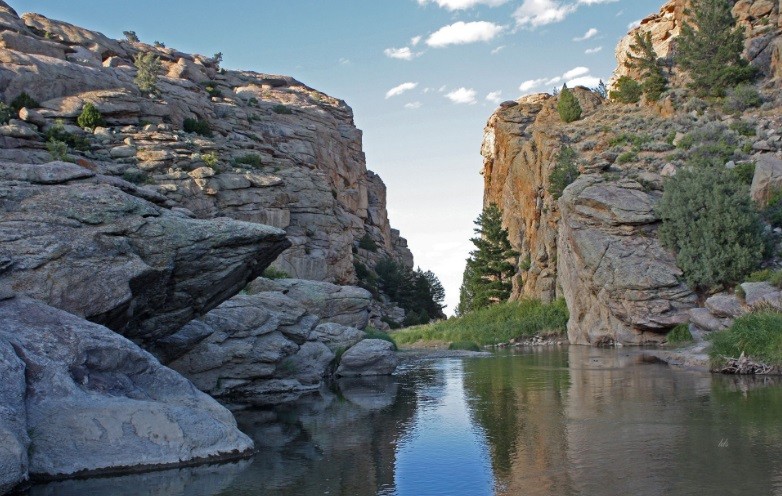
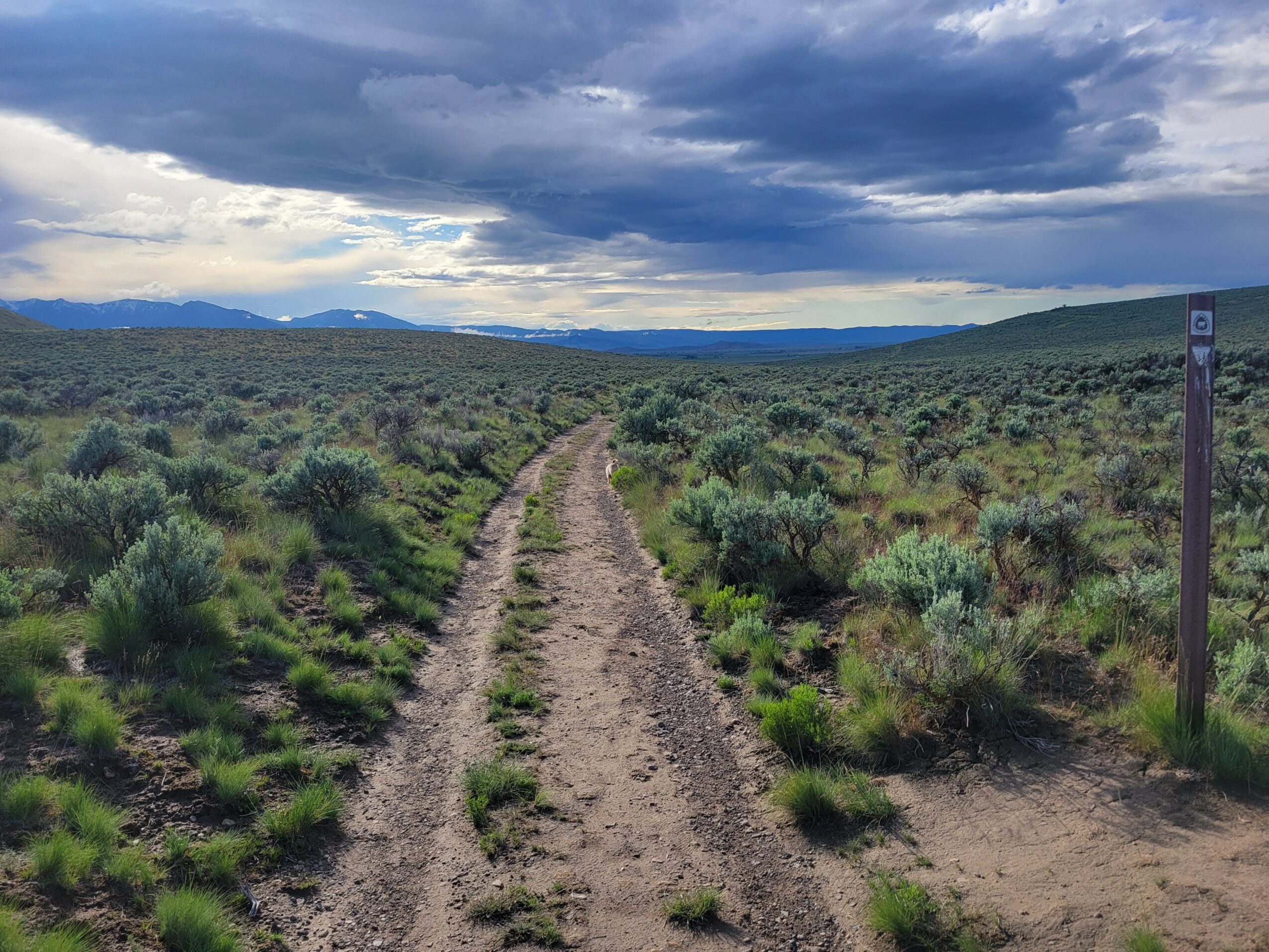
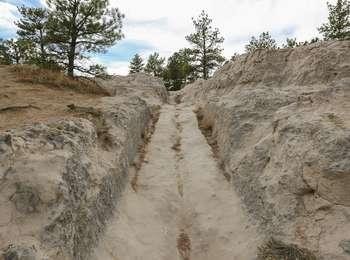
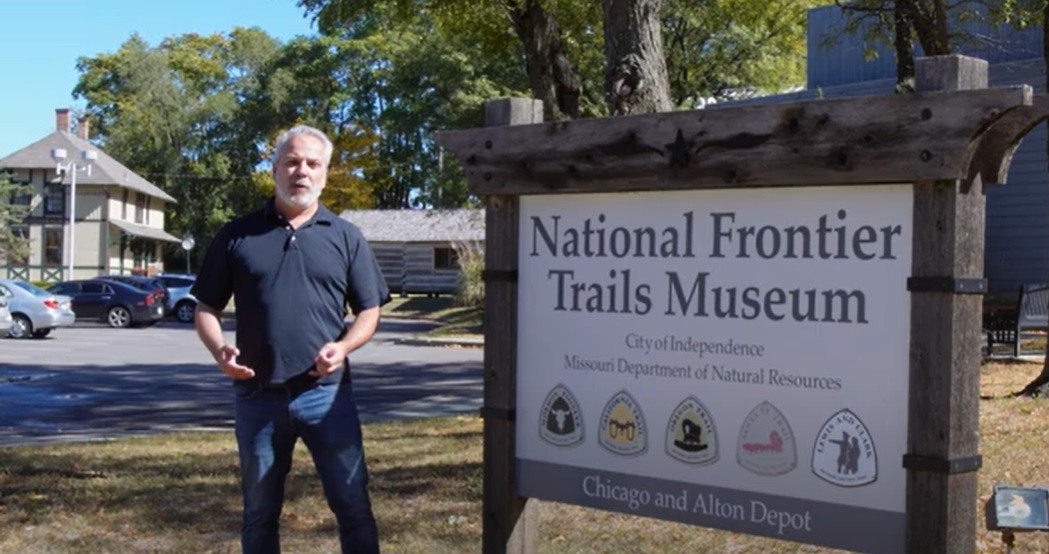
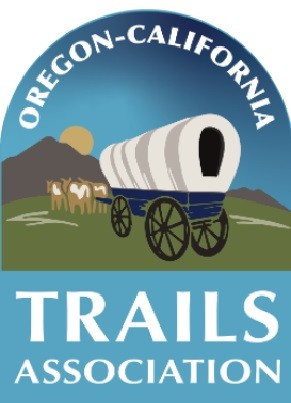
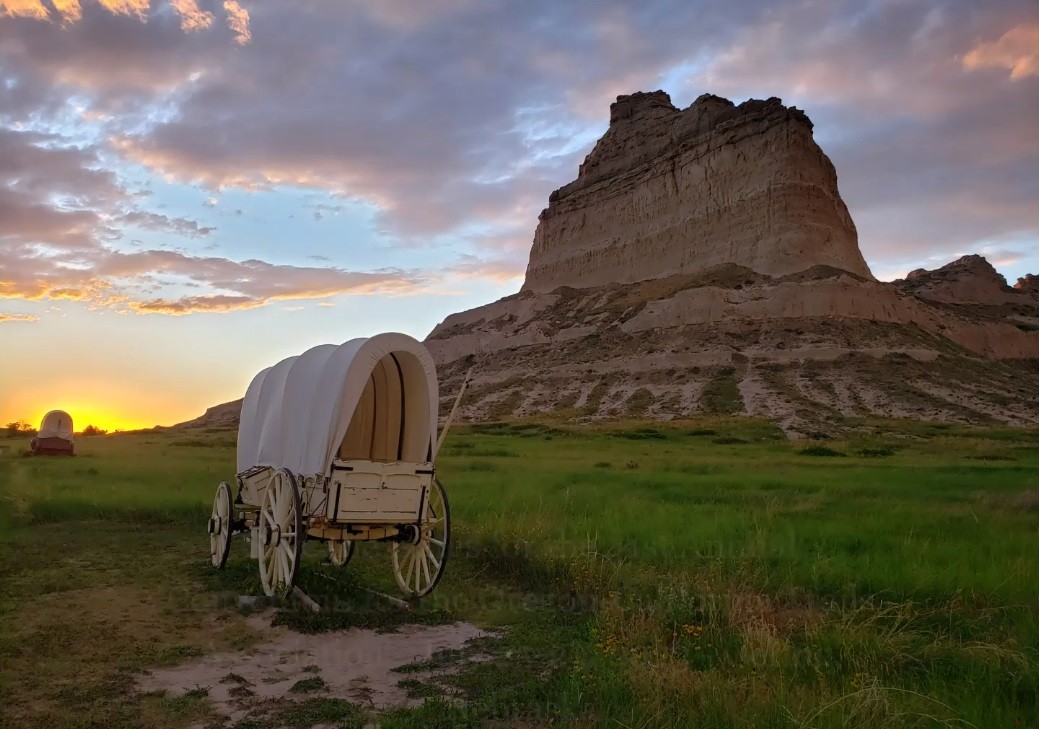
Image Credits
The first picture is of my wife, Steffany, and me. All other pictures in the “additional photos” are by me. I don’t know what order they came in. Still, they feature the following trail sites: -Sweetwater River through Devil’s Gate in Wyoming -Wagon at sunset at Scotts Bluff National Monument in Nebraska -Wagon ruts across Flagstaff Hill in Oregon -the very deep Guernsey Ruts at Guernsey State Park in Wyoming -me standing in front of the former site of the National Frontier Trails Museum in Independence -Alcove Spring waterfall in Kansas -Sunflowers in front of Court House and Jail Rocks in Nebraska -OCTA’s new logo, debuted earlier this year.





